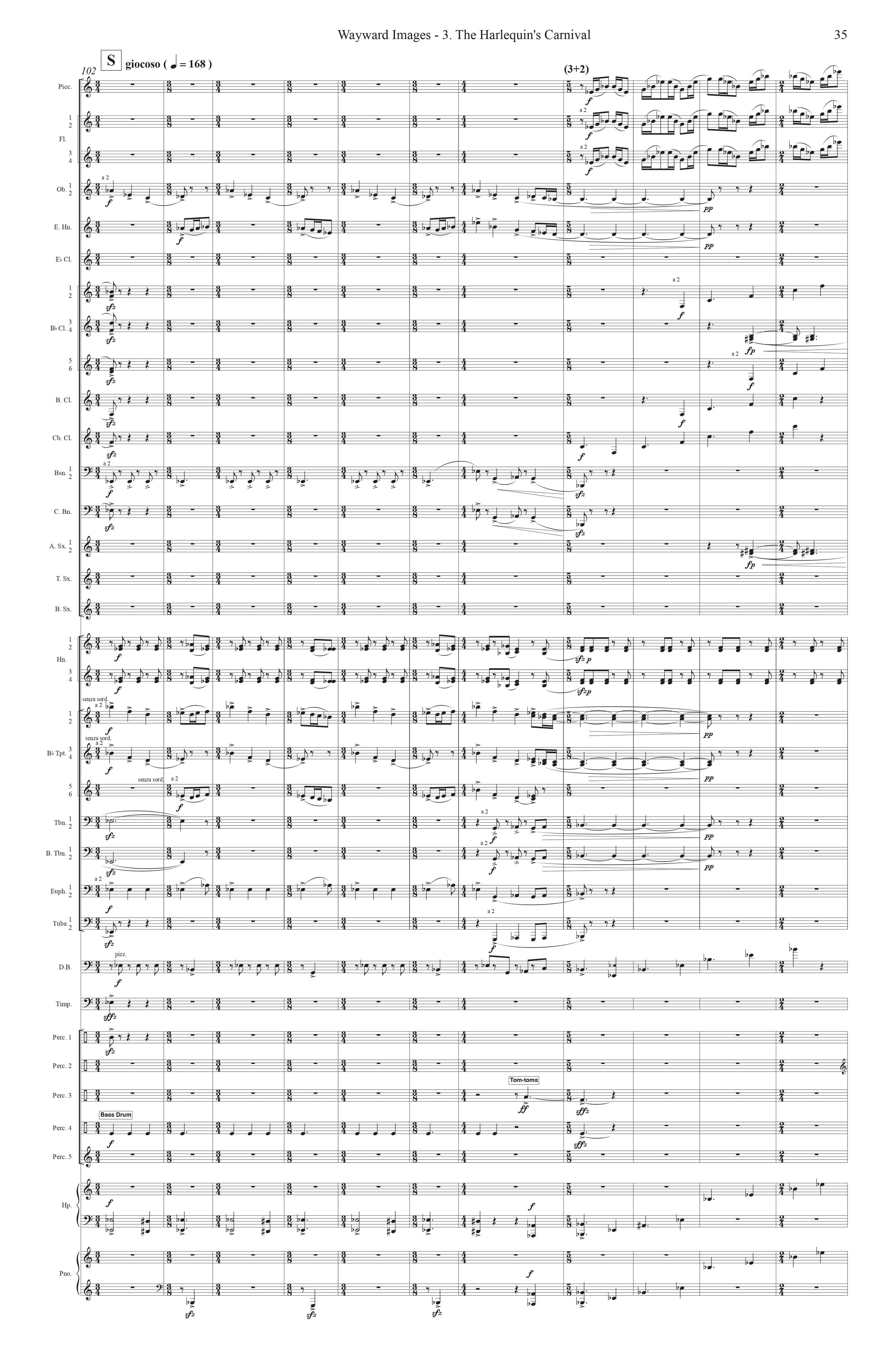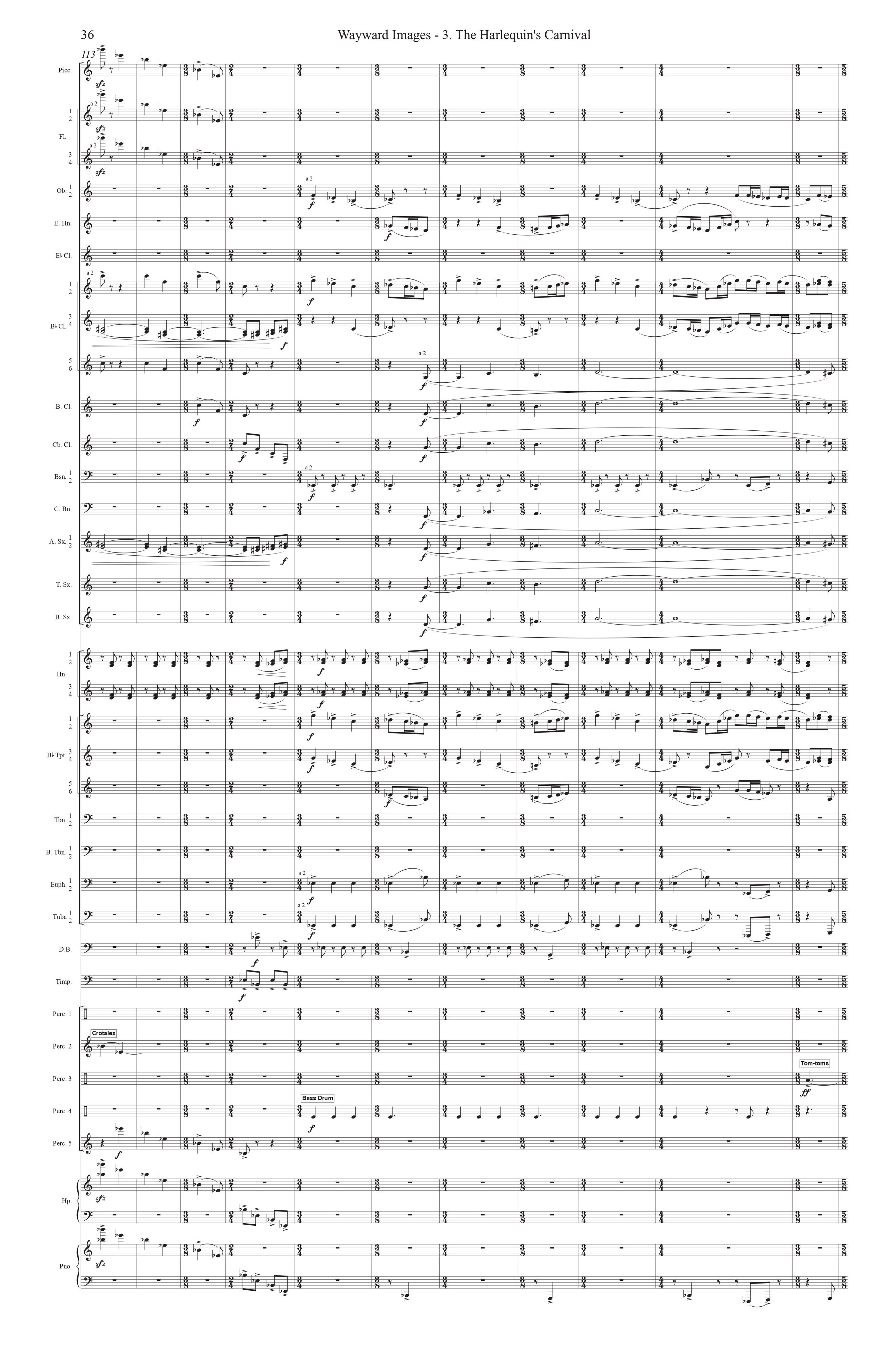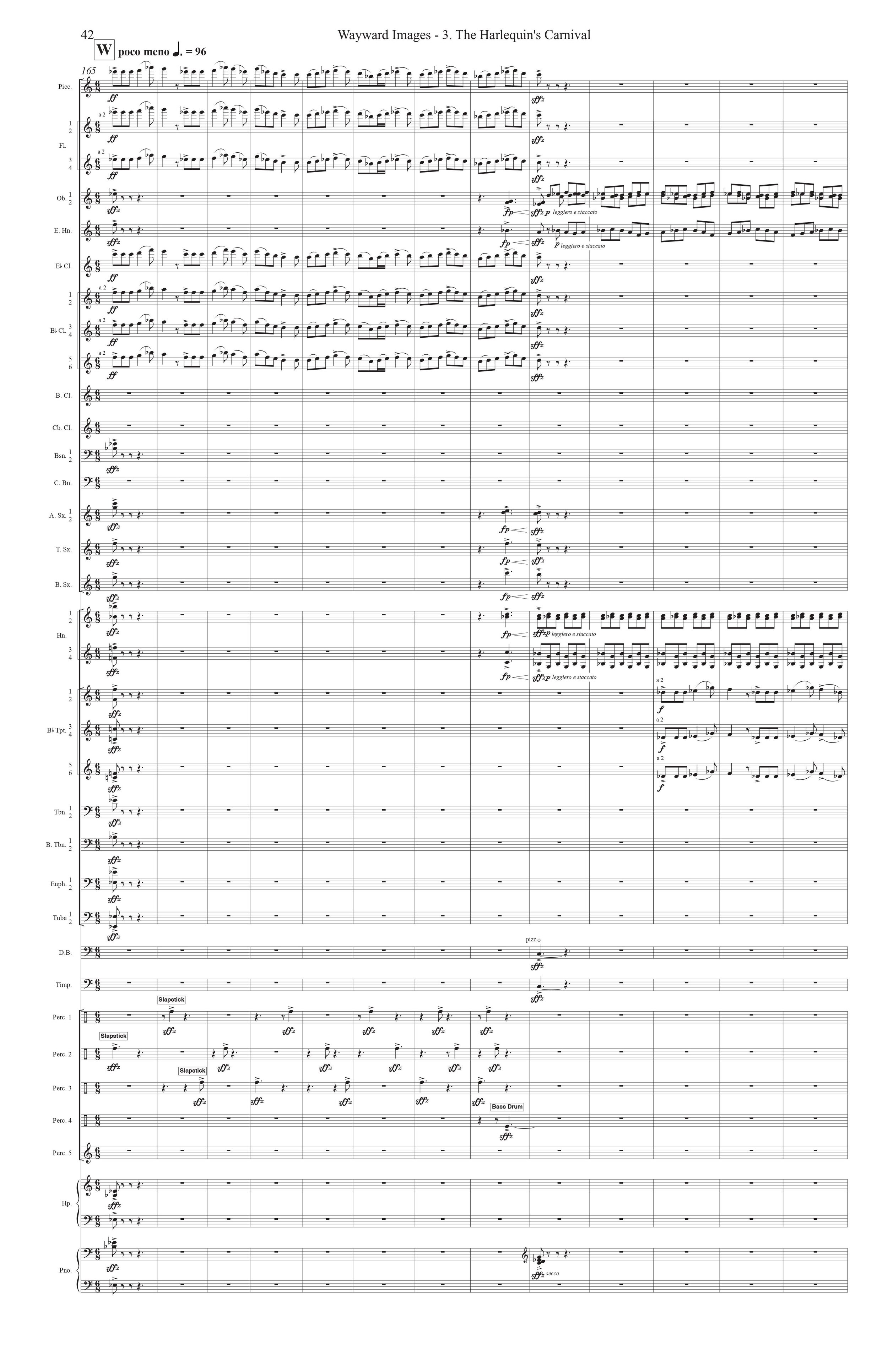wayward images, for large wind ensemble (2015)
Duration: 12 minutes
Instrumentation: piccolo, 4 flutes, 2 oboes, english horn, e-flat clarinet, 6 b-flat clarinets, bass clarinet, b-flat contrabass clarinet, 2 bassoons, contrabassoon, 2 alto saxes, tenor sax, baritone sax, 4 horns, 6 b-flat trumpets, 2 trombones, 2 bass trombones, 2 euphoniums, 2 tubas, double bass, timpani, 5 percussionists, harp, piano
Click here for perusal score/rental info
Premiere: October 25, 2015 at the New Horizons Music Festival by the Truman State University Wind Symphony, Curran Prendergast, conductor.
Notes:
Wayward Images was inspired by three works of Dadaist and Surrealist art from the 1920s. The first movement is a musical response to Paul Klee’s 1923 sketch called Equilibrium Caprice. Klee’s grotesque drawing is a stack of objects, cartoonish body parts, and other bizarre figures, precariously hanging from and balancing on top of each other. My short introductory movement is based on a series of musical equilibrium puzzles: high chords are answered with their mirror image in the low range, patterns of notes run forward and backward, melodies and accompaniments are turned upside-down. The second movement recreates the dreamy surrealism of Max Ernst’s 1920 Somnambulist Elevator, a collage of medical illustrations with a human figure seeming to lift off the ground. In this movement, a simple rising scale becomes the basis for a free musical fantasy. The final movement responds to Joan Miró’s major work, The Harlequin’s Carnival, from 1925-26. Miró’s busy canvas is full of fanciful creatures that seem to dance around the pathetic Harlequin (a clownish stock character from commedia dell’arte). In homage to Miró’s home region of Spain, my musical finale uses a pastiche of Catalan dance tunes (some quotations and some parodies) swirling around a lovelorn serenade to recreate the carnival atmosphere, and the downcast Harlequin stuck in the middle of it all.













































